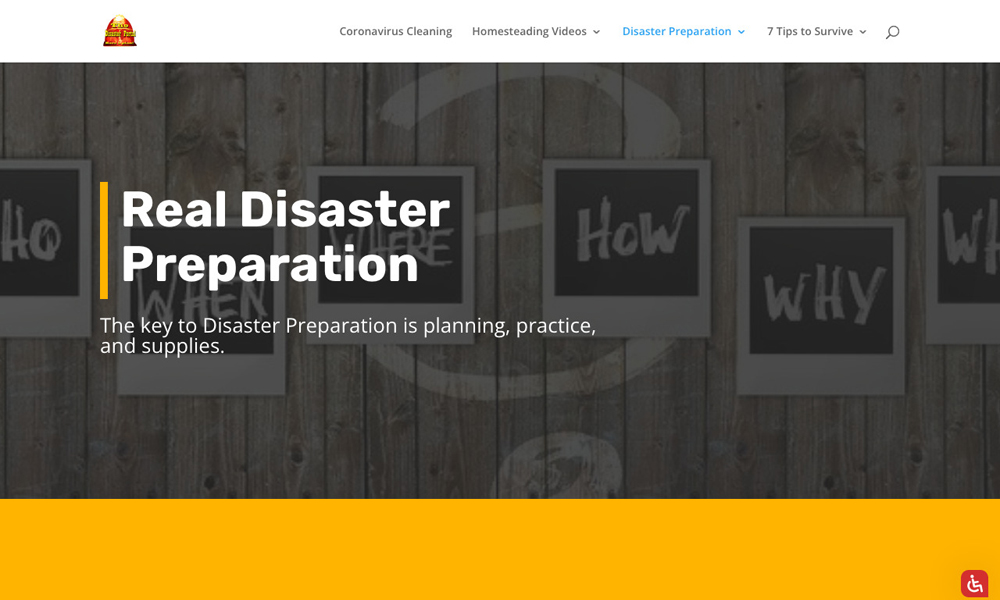The Disaster Portal
by The Disaster Portal
Description
Now that the Pandemic is slowing down and hopefully ending. It is time to start planning properly for the next disaster. There are so many things that can happen, it just makes sense to take time to prepare.
The first thing on your list of preparation should be communication. Make sure you have a way to receive emergency notifications.
These days, we recommend several tools.
First, use an app on your cell phone. The Government already has access to send out alerts on cell phones across the nation. Wireless Emergency Alerts (WEAs) are short emergency messages from authorized federal, state, local, tribal and territorial public alerting authorities that can be broadcast from cell towers to any WEA‐enabled mobile device in a locally targeted area. Wireless providers primarily use cell broadcast technology for WEA message delivery. WEA is a partnership among FEMA, the Federal Communications Commission (FCC) and wireless providers to enhance public safety.
WEAs can be sent to your mobile device when you may be in harm’s way, without the need to download an app or subscribe to a service. WEAs are messages that warn the public of an impending natural or human-made disaster. The messages are short and can provide immediate, life-saving information.
Just remember when you receive an alert to take action and take the alert seriously. Here are the kinds of alerts the systems might send.
Types of Wireless Emergency Alerts
Presidential Alerts are a special class of alerts only sent during a national emergency.
Imminent Threat Alerts include natural or human-made disasters, extreme weather, active shooters, and other threatening emergencies that are current or emerging.
Public Safety Alerts contain information about a threat that may not be imminent or after an imminent threat has occurred. Public safety alerts are less severe than imminent threat alerts.
America's Missing: Broadcast Emergency Response (AMBER) Alerts are urgent bulletins issued in child-abduction cases. Rapid and effective public alerts often play a crucial role in returning a missing child safely. An AMBER Alert instantly enables the entire community to assist in the search for and safe recovery of the child.
Opt-in Test Messages assess the capability of state and local officials to send their WEAs. The message will state that this is a TEST.
The next device everyone should have is an emergency radio. These have the ability to listen to Comprehensive coverage of AM, FM, Shortwave and 7 pre-programmed NOAA weather channels for entertainment, sports, talk-shows, breaking news around the world, and 24/7 weather forecast (USA and Canada ONLY) with PEAS (Public Emergency Alert System) real-time alert.
Newer models are very affordable and can include hand cranks, solar, USB charging, and battery backup. All so you make sure you can always access the emergency notifications. In major disasters or large scale emergencies, the cell towers or services may go down or be overloaded. So being able to receive emergency information and updates may be critical to your safety.
Once you have made sure you can receive emergency communications, you need to be ready to take action. This means having a safety plan in place. Every family should have a safety plan. Individuals should also have a plan, but for families, the plan must be shared and everyone must know what to do in an emergency.
When you have a plan in place, make sure you have at least one emergency kit put together and saved in an easy to access place.
I keep mine in a backpack ready to go at a moment’s notice, in a closet in my home. I even make sure to shuffle it to the front if I start to put things in front of the bag.
Items for your emergency kit:
Emergency Radio
Back up power for your cell phone
4 pack mylar blankets
3 days' water and food rations
Good quality masks
Safety Glasses
Multifunction Tool
Pocket Knife with tools
Survival Knife
Printed Survival Book
Life Straw for every household member
Once you have your items for your kit, pack them into a single backpack or go bag. When using survival food stuffs you can easily pack 3 days water and food for a person with all the above items into an average backpack. Extra food rations and water should be added for additional people in other packs.
IE: One family member grabs the big pack and others grab their food and essentials pack.
Learn more at https://thedisasterportal.com/
Related Websites
-
SOTD
Senso Dapp
by Sick agency
516 -
intelyHealth
by Oxcytech System
911 -
Kenji Roi
by kenjiroi
945




